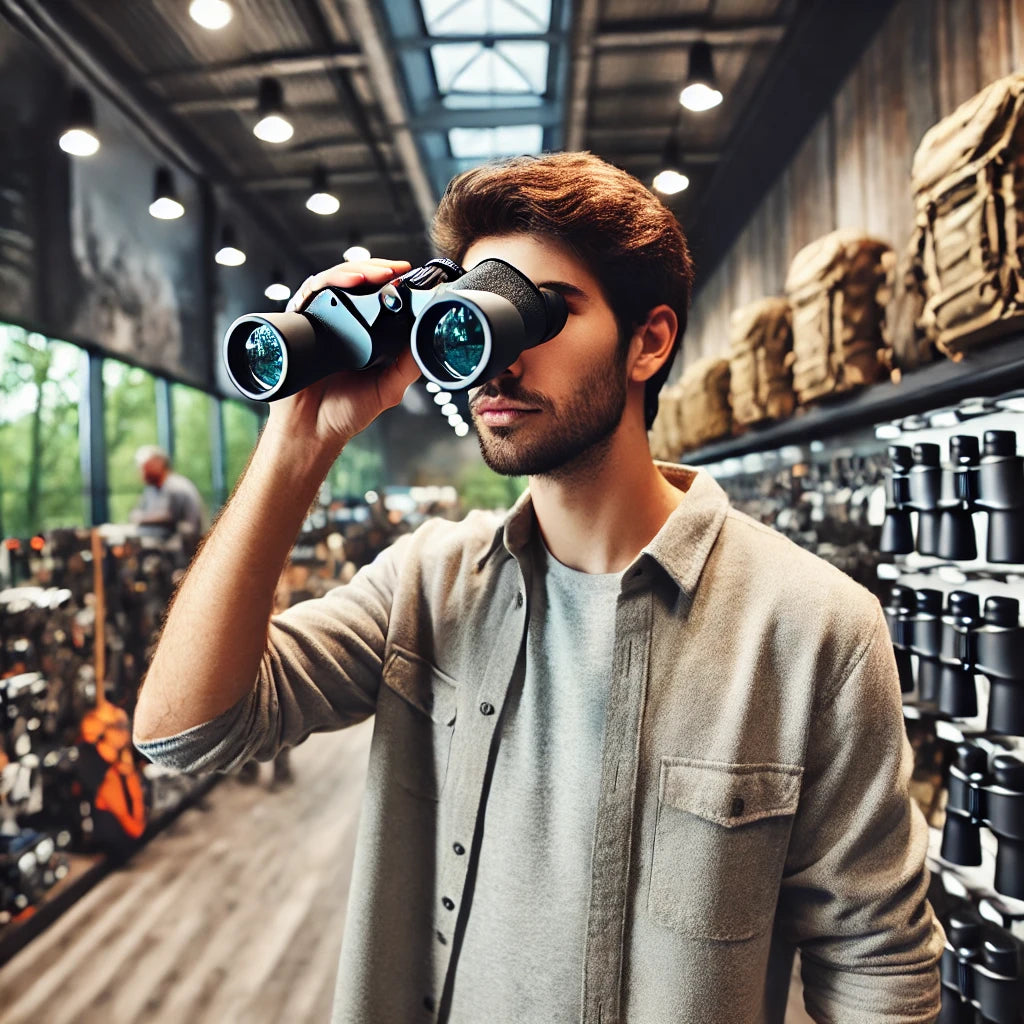
Choosing the Right Binoculars for Your Outdoor Adventures
Share
Selecting the perfect pair of binoculars for your outdoor escapades can be a game-changer. Whether you're hunting, hiking, birdwatching, or camping, having the right set of eyes can significantly enhance your experience. This guide will walk you through everything you need to know about choosing binoculars that fit your outdoor needs.
Why the Right Binoculars Matter
Imagine you're on a hiking trail, and you spot a rare bird. Without the right binoculars, you'd miss out on the intricate details of its plumage. Or perhaps you're camping, and a distant mountain view catches your eye. The right binoculars will bring that scenery into sharp focus, making your adventure much more memorable.
Key Factors to Consider When Choosing Binoculars
Magnification and Objective Lens Diameter:
- Magnification: This is the first number you see on binoculars (e.g., 8x42). It indicates how many times closer an object will appear compared to the naked eye. For general outdoor use, 8x to 10x magnification is ideal.
- Objective Lens Diameter: The second number (e.g., 42 in 8x42) measures the diameter of the front lens in millimeters. A larger diameter means more light enters, providing brighter images, especially in low-light conditions. For outdoor activities, a diameter between 30mm and 50mm works well.
Field of View:
- A wider field of view allows you to see more of the landscape without moving the binoculars. This is particularly useful for birdwatching and scanning large areas.
Weight and Portability:
- Lightweight binoculars are easier to carry on long hikes and camping trips. Look for compact models that don’t compromise on image quality.
Durability and Waterproofing:
- Outdoor activities often expose binoculars to harsh conditions. Opt for models that are waterproof and fog-proof to ensure they can withstand the elements.
Image Quality:
- High-quality optics with coatings like multi-coated or fully multi-coated lenses reduce glare and improve image clarity and brightness.
Tips for Using Your Binoculars
- Adjust the Eye Cups: Make sure the eye cups are adjusted correctly for your eyes, especially if you wear glasses.
- Focus Properly: Use the central focus wheel and diopter adjustment to get a clear image.
- Keep Them Clean: Regularly clean the lenses with a soft, dry cloth to maintain image clarity.
- Practice: Spend time practicing how to quickly bring objects into focus. This will enhance your outdoor experiences.
Frequently Asked Questions (FAQs)
Q: What's the difference between roof prism and porro prism binoculars? A: Roof prism binoculars are more compact and often more durable, while porro prism binoculars usually offer better image quality for a lower price but are bulkier.
Q: Can I use binoculars with glasses? A: Yes, look for binoculars with adjustable eye cups and a longer eye relief (15mm or more) to comfortably use them with glasses.
Q: How do I maintain my binoculars? A: Keep them clean, store them in a protective case, and avoid exposing them to extreme temperatures or moisture.
Wrapping Up
Choosing the right binoculars for your outdoor adventures can elevate your experience, making every hike, birdwatching trip, or camping excursion more enjoyable. Remember to consider the key factors such as magnification, objective lens diameter, field of view, weight, and durability. With the right pair, you'll be ready to explore the great outdoors like never before.
At Hunters Field Guide, we offer a variety of quality binoculars for all your outdoor needs. Take a look at our selection!
